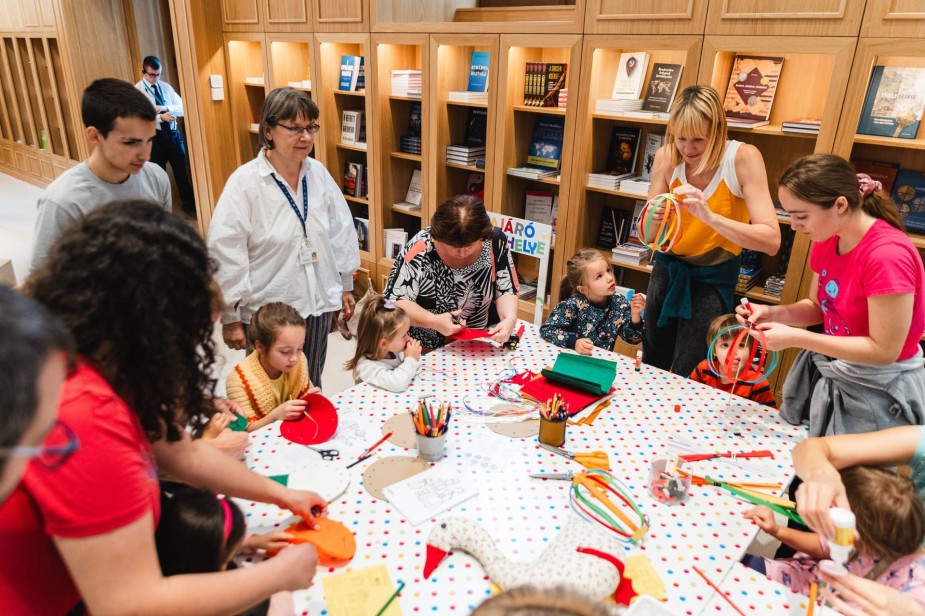
Punctured copper, diamond half-crowns - fairy tales can teach you about money
Fairy tales convey important financial attitudes and values, and children can learn a lot about the value of money - and visitors can experience this on the 29th of September, on Folk Tale Day, at the Money Museum.
Our treasured stories can help children’s financial education, since there are many folk tales, folk sayings and songs about money. On the Hungarian Folktale Day, the Money Museum will be raising awareness of financial education with a "fabulous" programme for children on the 29th of September, Elek Benedek's birthday, from 10 am to 6 pm.
More information about the event
Money in fairy tales
According to the 'storybook', the ingredients for success are leaving your comfort zone, a change of perspective, adaptability, smart use of resources, perseverance. Along the way, the hero does not give up the struggle even after a failure; he goes through several trials and tribulations to reach his goal.
Although folk tales were written many centuries ago, they are still relevant in the financial situations of the current day and age. Although money is mostly used in a symbolic sense in fairy tales, sometimes it is also used as a means of payment, so children can learn a lot about how much money was worth in a certain era and what they would get for that amount today. The concept of exchange can also be used as an introduction to money, as a way of getting children in the right frame of mind, since it does not yet refer to money, but it is a way of assigning value to an object - for example, in the story of The Golden Fleece and the Black Sheep.
Penny-pinching
We have many expressions for money, which are echoed in Hungarian folklore: forint, krajcár, garas, pengő, tallér. The garas (copper) appears in many sayings ("The garas goes on a journey: from one hand to another. Who knows, don't tell: Where is the way of the garas?") was a change of five, three or two pennies, struck from silver or copper. When Charles Robert (Károly Róbert) introduced the gold coin, the change became the garas. At that time, one gold forint (fiorino de oro) was worth 16 silver garas. The garas was therefore a less valuable currency, like the denarius, it was a small coin - hence the expression ‘a penny-pincher, knocks a garas against their teeth’. This is also a synonym for pettiness in the story of the Two Garas, in which Jancsika and Dani get into an argument over two garas coins, and even though they get rich thanks to the treasures of the robbers, Dani does not see reason and insists on owing two garas. The phrase "not worth a penny" is often heard in our stories, as is the similar expression "not worth a penny". The batka was a coin in 16th century Bohemia (current Czech Republic) and was worth the least of all the currencies that ever circulated, so even if it had been made of wood it would have been considered of no value.

After the end of the Turkish occupation, Lipót I introduced the kreuzer, which became the equivalent of a garas. It can therefore be said that the kreuzer was not worth very much. 'I had two kreuzer, and I bought wheat with them', the song goes, although how much wheat could be bought for so much money is a question. What is certain is that at the turn of the last century, a kilo of beef cost 36-60 kreuzer, sour cream 25-35 kreuzer and a kilo of trappist cheese 100 kreuzer. Our proverb 'a kreuzer will eventually become a forint' also shows that a thrifty person appreciates even the smallest amount of money. If our children want to know how much it would have cost to pay for a kreuzer at the income of the time, they should multiply it by inflation and by the rise in real incomes to today's value. In other words, determining exactly how many forints a kroner in the 19th century would be today is a complex question, but it can start a conversation about inflation, changes in the financial system and other economic factors.
Thaler, pengő
The gold thaler, like the diamond half- kreuzer, also exists only in storybooks. In our country, even in the first half of the 19th century, the thaler was the prevailing coin, worth two forints, but it is not clear how much the star thaler, which the girl in the Grimm fairy tale receives for her kindness, is worth. The pengő, which was worth a lot when it was introduced in 1927 (today it is worth about 1140 forints), eventually depreciated, and although it does not appear often, it also appears in fairy tales and folk plays - think of the folk tale "The Pengő", in which the prince is called the pengő. When telling stories to children it is important talk to them about what money can be spent on, how it can be spent well, what are useful and useless things, and what happens if you don't pay.
Further news
All newsThank you for your kind understanding!
The success of the HUNOR Program is now on display in the exhibition space
The Tarnay family brought silver bowls
Thank you for your kind understanding!
Thank you for your kind understanding!
The success of the HUNOR Program is now on display in the exhibition space
The Tarnay family brought silver bowls
Thank you for your kind understanding!



